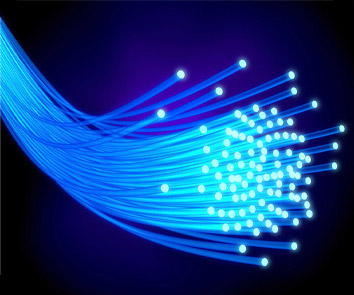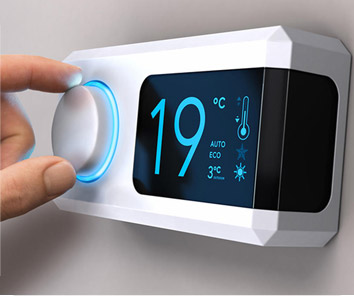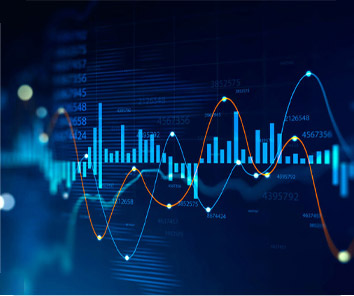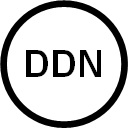

Converged Networks


Connected Components
We are living in a connected world with an ever increasing number of connected devices. Advances in technology and the Internet of Things (IoE) are transforming buildings – enabling better communication between devices, individuals and the building. For example, facility managers can access a range of devices, such as CCTV, lighting, HVAC, security and access control, all in the one place. Similarly, previously siloed devices can interact and control each other.


Advanced Analytics
KelTech IoE has gained unparalleled experience developing solutions for a variety of infrastructure projects.

Enable high speed, feature rich building and infrastructure technology services while minimising install and maintenance costs using a fibre optic converged network.

Implement a simple, low cost power supply quickly to multiple devices in large spaces while also reducing visual pollution and operational costs.

CCTV cameras and on-street sensors provide real-time data and smart analytics to enhance safety, manage traffic flows, provide parking space information and manage automatic access to parking areas.

Adaptive sensors such as motion detectors, occupancy counters, thermometers, humidity, CO2 and air quality monitors, all work together to learn about daily building usage to make automatic adjustments and to ensure maximum comfort with minimum energy consumption.

Implement sophisticated security solutions to manage visitor and employee access to designated zones throughout the office using a variety of card and biometric technologies.

A more modern and mobile work force rely less and less on being physically present in the office. As such, building management systems (BMS) are evolving to cater for the flexible work-force, with real-time desk and meeting room allocations available to employees, as well as live-tracking of canteen, in-house gym and other services to ensure minimum wait times.

An essential requirement for the smart home is high speed multi-media access capable of handling multiple devices across all data, voice and video requirements of modern living. Integrating multiple services, such as satellite, broadband and terrestrial TV, through a controller facilitates a central management and single app solution for a variety of multimedia requirements.

Modern security and access control systems provide remote access and video recognition capability to monitor and control access to the home, giving the resident peace of mind.

Tailored HVAC solutions for a modern apartment provide remote control capability as well as learning software to adapt the environment to suit your needs on a daily basis. Solutions such as lighting control, automatic blinds, smart thermostats and radiator control help tailor each room to meet the resident needs.

Advanced video management systems (VMS) can greatly improve in-store security, providing quicker search capability around specific customer profile types and specific areas of activity.

Using activity based software analysis of video footage, combined with purchasing information provides sophisticated buyer behaviour information and enables smarter decision making around in-store product and ad placement.

Motion and heat sensors provide real-time feedback to building information systems to trigger action-based responses which can be used to prevent overcrowding, using in-store capacity display notices.

The modern hotel room is unrecognisable to what it was a few years ago. Room access has progressed from keys to cards to mobile phone applications. Mobile based applications are also being used to integrate with all in-room functionality, from TV and entertainment, to lighting, HVAC and blind control as well as room service and housekeeping.

New building management systems (BMS) connect smart sensors throughout the hotel to monitor activity and adjust HVAC and lighting accordingly.

Smart guest room solutions use IoE based sensors which link directly to the HVAC, air purifiers and building management systems (BMS) to monitor the Indoor Air-Quality (IAQ) and dynamically adjust to maintain industry requirements. In this way, airborne microbial (incl. viruses) can be reduced by more than 80%.

Video intelligence software providing real-time feedback for digital signage can avoid over-congestion and frustration for travellers. For example, a restroom occupancy tracker can reduce unnecessary over-crowding using displays to indicate occupancy status.

Smart sensors for clean air are being used to monitor and manage for multiple gas concentrations. These sensors learn and react to unclean or unpleasant odours and apply a variety of corrective actions, including dynamic adjustments of gases in the area as well as alert notifications to staff for manual cleaning.

Modern travel environments require additional checks of passengers on a remote and personal level. Intelligent body temperature systems provide a range of capabilities including reliable, remote, mass screening as well as sophisticated real-time identification and tracing of individuals with abnormal temperatures.

Dynamic digital signage as crowds arrive and leave a venue, pre-ordered snack management and restroom queue information are some of the enhanced people management services being deployed with advances in technology to improve the audience experience and optimise movement of large numbers of people in confined spaces.

Congested venues of densely populated audiences require careful understanding of the technology demands to ensure uninterrupted and high-speed 2-way internet access for all attendees.

Sophisticated audio-visual (AV) systems can greatly enhance an event experience. New technology solutions include increasing scale in screen sizes as well as additional visual effects via translucent screens, holographic and 3D images. Similarly, intelligent lighting effects match the ambience and mood of the event with all AV effects combining for a more immersive experience.

In room control of temperature, lighting, blinds, entertainment as well as remote access to family and friends not only helps the recovery process of patients, but can also improve staffing requirements. Similar to the home, mobile apps as well as voice activated controls provide instant response and peace of mind for the patient.

Manually locating mobile equipment is a significant drain on hospital staff. Technology based equipment tracking and retrieving reduces staff time wastage, improves equipment utilisation and meets patient needs quicker.

Integrated systems and centrally controlled building management systems (BMS) for hospitals help with patient flows prior to arrival and within the building. Individual technology efficiencies, such as a pre-arrival check in, way-finder assistance and service queue management can all contribute positively to the patient experience and optimal usage of space within the hospital.

Cost effective changes in smart lighting and HVAC control can provide a significant energy saving for a school. Automated and movement-based lighting, as well as careful monitoring of HVAC use and wastage can provide 5-10% saving in building energy costs.

Legacy buildings often prove difficult to provide optimum WiFi coverage for online-based learning activities. Constant advancements in this area have resulted in schools being able to implement cost effective solutions.

As hybrid in-class and at-home learning models become more pervasive, the smart school building requires upgrading to meet this modern demand. Advanced, and even basic, audio-visual (AV) equipment, such as digital screens and speakers can enhance the learning experience and integrate more seamlessly with the shift to digital learning.

Transform communication network deployments by combining power and fibre in a single integrated solution.

Enable high speed, feature rich building and infrastructure technology services while minimising install and maintenance costs using a fibre optic converged network.

Implement a safer, faster and lower cost electricity solution, as part of an enhanced converged network implementation.

Overcome legacy and fixed line limitations, broaden reach and connectivity of smart buildings using LTE and 5G technology implementations.

Use sophisticated audio-visual solutions to enhance building occupier experience, with dynamic digital signage, hologram video instruction, mood music and lighting.

Ensure wellbeing of individuals within buildings with a range of solutions, such as occupancy monitoring, clean air filters, temperature monitoring and technology based hygiene solutions.

Provide seamless integration of all multimedia sources and channels through fibre optic cabling, high speed WiFi and other communications standards, connecting all fixed and mobile devices seamlessly to video, voice and data content.

Optimise energy consumption with automated energy management systems (EMS), learning from building occupancy usage and user profiles to ensure temperature needs are met in a tailored way, specific to areas or zones in a building.

Use low cost, low power LED intelligent lighting solutions to gain significant savings in retrofitting, maintenance and overall energy consumption throughout the building.

Provide high end protection and peace of mind with a range of 24/7 security and access control solutions such as motion sensors, IP cameras, intercoms, automatic number plate recognition (APNR) and more.

Use smart sensors and interconnected safety management systems to monitor, anticipate and trigger appropriate responses to all safety incidences or faults in relation to smoke, fire, water, air, energy and building access.

Overcome the complexity of capturing, interpreting and adjusting the building environment using a smart building management system (BMS). Analyse building usage with smart sensors to improve space allocations and people movement, optimise lighting and HVAC systems, and enhance occupier wellness.

Provide easy control as well as mobile and hands free access to all home IoE devices and services through a centrally managed server which learns and adjusts to suit occupier needs and individual habits.

Use a combination of motion sensors, heat mapping, video and audio analysis to capture building usage and people movement data and adjust building configurations, signage and space allocations to optimise usage.

Boost CCTV video analytics with powerful search and action based capabilities, such as object filtering, heat mapping and motion monitoring to enhance security, people and incidence analysis as well as building usage analysis.
Quintain developers partnered with KelTech IoE team to deliver a range of smart building technology solutions in a mixed use site of residential, commercial and retail units at Wembley Park, London.